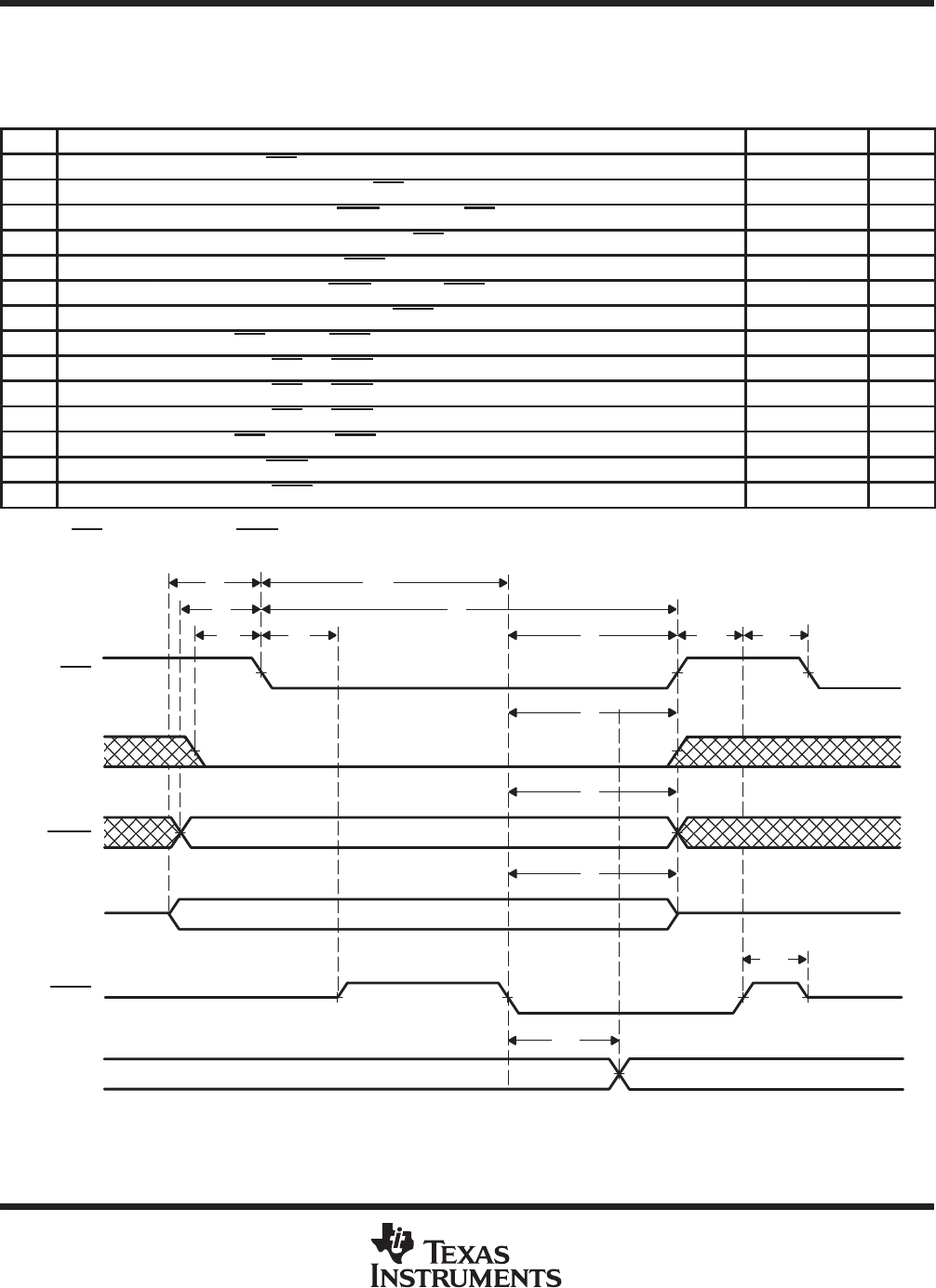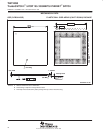
TNETX4090
ThunderSWITCH II
9-PORT 100-/1000-MBIT/S ETHERNET
SWITCH
SPWS044E – DECEMBER 1997 – REVISED AUGUST 1999
69
POST OFFICE BOX 655303 • DALLAS, TEXAS 75265
DIO interface
The DIO interface is simple and asynchronous to allow easy adaptation to a range of microprocessor devices
and computer system interfaces.
DIO and DMA writes (see Figure 25)
NO. MIN MAX UNIT
1 t
w(SCS)
Pulse duration, SCS↓ 2t
c
ns
2 t
su(SRNW)
Setup time, SRNW valid before SCS↓ 0 ns
3 t
su(SAD)
Setup time, SAD1–SAD0, SDMA valid before SCS↓ 0 ns
4 t
su(SDATA)
Setup time, SAD7–SAD0 valid before SCS↓ 0 ns
5 t
h(SRNW)
Hold time, SRNW low after SRDY↓ 0 ns
6 t
h(SAD)
Hold time, SAD1–SAD0, SDMA valid after SRDY↓ 0 ns
7 t
h(SDATA)
Hold time, SAD7–SAD0 valid after SRDY↓ 0 ns
8 t
h(SCSL)
Hold time, SCS low after SRDY↓ 0 ns
9 t
d(SRDYZH)
Delay time from SCS↓ to SRDY↑ 10 ns
10 t
d(SRDYHL)
Delay time from SCS↓ to SRDY↓ 2t
c
†
ns
11 t
d(SRDYLH)
Delay time from SCS↑ to SRDY↑ t
c
2t
c
+10 ns
12 t
h(SCSH)
Hold time, SCS high after SRDY↑ 0 ns
13 t
w(SRDY)
Pulse duration, SRDY↑ t
c
ns
14 t
d(SINT)
Delay time from SRDY↓ to SINT valid. (write to INT or INT_Enable register) 2t
c
ns
†
When the switch is performing certain internal operations (e.g., EEPROM load), there is a delay of up to 20 ms (24C02) or 800 ms (24C08)
between SCS
being asserted and SRDY being asserted.
SCS
8 11 12
1
2 9
3
4 10
5
6
7
13
SRNW
SAD1–SAD0
SDMA
SDATA7–
SDATA0
SRDY
14
SINT
Figure 25. DIO and DMA Writes


















